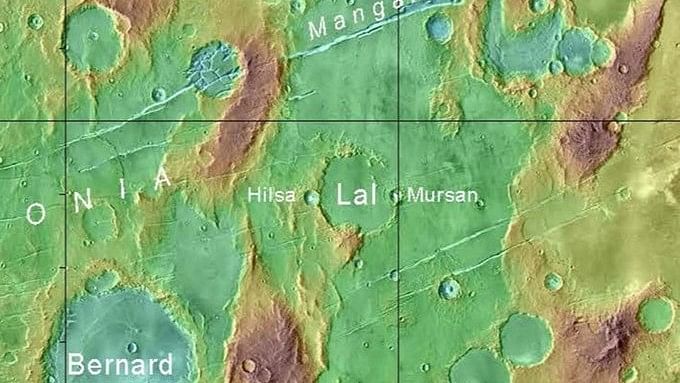
The finding confirms planet was wet and water flew on surface.
Credit: X/@PRLAhmedabad
Ahmedabad: The scientists of the city-based Physical Research Laboratory (PRL) have discovered three new craters on Mars situated in the Tharsis volcanic region on the planet.
PRL in a press release stated that following its recommendation, the International Astronomical Union (IAU) Working Group for Planetary System
Nomenclature has approved naming the three craters on Mars as Lal, Mursan and Hilsa. Lal is 65 km wide and is named after renowned geophysicist and former PRL director (1972-1983) Devendra Lal.
Mursan is 10 km wide and superimposed on the eastern side of the rim of the Lal crater. It is named after a town in Uttar Pradesh. Hilsa crater is also 10 km wide and superimposed on the western side of the rim of the Lal crater. It is named after a town in Bihar.
"The entire area of Lal crater, in the Tharsis volcanic region on Mars, is covered with lava. There are geophysical evidence of material other than lava in this crater, with a 45-m thick sedimentary deposit in the subsurface of the crater, obtained using subsurface radar SHARAD/MRO," PRL stated in the release.
The further added that "the discovery provides compelling evidence that the water has moved large volumes of sediment into the crater now named as “Lal Crater”. This finding also confirms that Mars was once wet and water has flown on the surface."
Two small superimposed craters, on either side of Lal Crater- Mursan and Hilsa- provide the timeline for the infilling process of the Lal Crater and suggest that the infilling has been episodic.